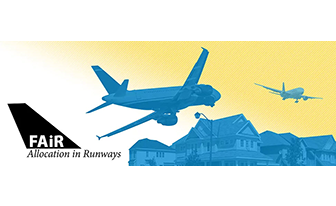NOISY device install is easy and are self-install friendly! Whether one wants to install 10s, 100s, 1000s, or more NOISYs, we will be happy to offer you a workable package to guarantee installation success in alignment with your goals.
Pilot Project Planning Assistance
Let GetNOISY assist you with planning where and when to deploy your NOISY devices: We help you find the best places within your area to track airplane noise, then for each installation site where to put the microphone for best results, and where to install the first NOISYs for initial tests.
For example, here are the steps to a successful community installation:
Step 1: Identify a local project coordinator to plan, schedule and coordinate the installation of the NOISYs at participants’ locations. The local coordinator spearheads the efforts from the local side with our support and will:
- identify suitable community members / installation sites,
- ensure that community members are committed to project process and agree on suitable installation dates/times,
- coordinate with community members to gather all necessary information for deployment,
- establish deployment timelines.
We support the local projector coordinator on every step of the way to establish best practices, avoid common pitfalls, and engage the community.
Step 2: Identify a local technical support person to assist in deployment and setup of NOISYs. The local technical support person will:
- become familiar with all installation and set-up processes,
- spearhead the onsite device installation and Wi-Fi setup,
- serve as local technical support staff and
- provide first level trouble-shooting support.
We make sure the technical support person is always up to date on the newest developments and provide help with any issues that may occur.
Large Scale Planning
You are a state, county, city, or community and want to ensure airplane noise is properly monitored in your jurisdiction or area of interest? Please contact us! No project is too large or too small for us. We’d be happy to explain all the necessary steps from noise monitoring to possible policy action for a quieter, more livable future.
Deployment Assistance
Let us assist you in a three-phase deployment of the NOISY noise sensors:
Step 1: Start with a small-scale installation of 10-20 NOISYs concentrated in a pre-determined test area. We help finding the best locations to get a good preview of what a larger scale deployment will look like.
The local project coordinator communicates the deployment plan and schedule which:
- provides an overview of all installation sites,
- determines the deployment sequence and
- provides an installation time schedule, which allows for efficient installation.
We make sure the local project coordinator has all the information necessary, knows about best practices, and has developed a clear plan that avoids possible pitfalls.
The local technical support person will assist in deployment and setup of the NOISYs by:
- verifying the installation schedule with the project coordinator,
- establishing contact with the community members to confirm installation schedule,
- preparing all installation components and necessary tools,
- preparing a laptop with the necessary programs to perform the Wi-Fi setup at installation sites,
- having transportation available to get to installation sites,
- familiarizing himself with the deployment sequence
- installing the NOISY devices at installation sites, setting up Wi-Fi and verifying proper operation.
- monitoring NOISYs for a week and ensure that all devices are working correctly.
We check each step with the technical support person to make sure the installation will be successful.
Step 2: Install majority of noise sensor units (80-90%) to cover the pre-defined complete target area, adhering to points 1 and 2 in Step 1.
Step 3: Install remaining and potentially additional units to augment area coverage. We anticipate this step will accommodate any minor unforeseen issues such as unusual building patterns or disruptive vegetation areas. This step will also consider adding sensors outside of the original target area to improve the analysis of noise patterns.



